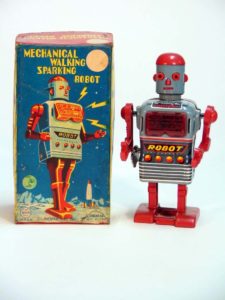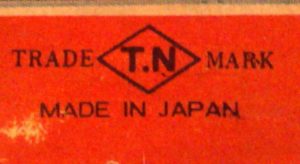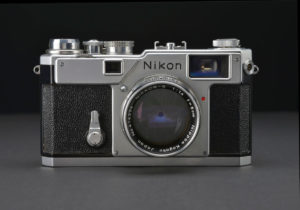
“Made in Japan.” Our fathers, who may well have fought in the Pacific theater in WWII, would derisively roll their eyes when reading this out loud from a label on a cheap piece of junk. “Serves them right” they might have mused, recalling fallen comrades in arms, “to be the lowly producers of the world’s cheap junk.”
When we grew up, probably 90% of our toys bore the label claiming Japan as their place of origin. Long before we became so dependent on foreign oil, our first serious trade deficit arose thanks to huge ships loaded with every sort of plastic or tin gewgaw which was assembled in that Asian island nation half a world away.
And that label implied cheapness, shoddiness, disposability, lack of quality. One would NEVER give someone else a meaningful gift that was made in Japan.
How times have changed.

At presstime, the economic roller-coastering of late has put many American companies in a state of crisis. General Motors in particular is in serious trouble, the very continued existence of this industrial giant being in real jeopardy.
Yet, Toyota, Nissan, Subaru, Mitsubishi, Mazda, and Honda are all doing very well, thank you. And the reason they are doing so well is that “made in Japan” has come to mean something very, very different than it did when we Boomers were kids.
Where did it all begin? When did the “Made in Japan” label go from something to be derided to a stamp of the highest quality?
A date would be hard to pick. But by the mid 1970’s, Japanese-made items like cameras were recognized by the rest of the world as being sophisticated instruments manufactured to extremely high standards.
There was nothing shoddy about a Nikon. Or a Pentax, a Canon, or an Olympus, for that matter.
The elder members of the Boomer generation were coming home from Vietnam loaded with goodies picked up very cheaply overseas. These goodies included Pioneer stereos, Seiko watches, and Nikon cameras.

The same kids who played with toys that their fathers sneered at now viewed items made in Japan in a very new light.
What Japanese-manufactured items would be the next hot tickets?
During the Korean conflict, Japanese automakers, who had been around since the early 20th century, were commissioned to manufacture army trucks. The much-needed business from the nation’s conquerors was just the ticket to revive an industry that had been driven to near-extinction by the loss of WWII.
After the Korean armistice, the manufacturers cranked out tiny cars perfect for Japan’s crowded roads and expensive fuel prices. Occasionally, one of these miniature vehicles would show up on American highways, to the amusement of WWII vets driving massive tailfinned land-boats.
By the 1970’s, when all of those Vietnam vets were arriving back home, Japanese cars had gotten a bit larger and more powerful. They also had developed a reputation for dependability and durability. And they got good gas mileage when fuel prices began going haywire.
That leads to today. When my kids began looking at the possibility of purchasing their first cars (which would be affordable on a minimum-wage budget), I told them that dad would work on them for free as long as they were (a) Japanese and (b) fuel-injected. They kept up their end of the bargain, so did I.
Now, China is the world’s laughingstock when it comes to cheap junk. Sometimes, it’s not so funny when things like poisons get into foodstuffs.
But look for the world’s most populous nation to sooner or later learn the lesson so effectively demonstrated by Japan: Quality is much, much more valuable than quantity.